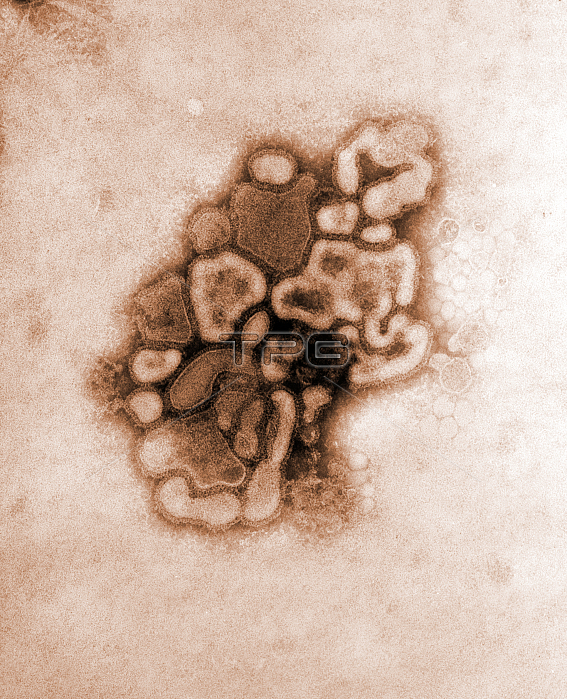
Colorized transmission electron micrograph (TEM) of the A/New Jersey/76 (Hsw1N1) virus, while in the virus' first developmental passage through a chicken egg. Swine Influenza (swine flu) is a respiratory disease of pigs caused by type A influenza that regularly cause outbreaks of influenza among pigs. Swine flu viruses cause high levels of illness and low death rates among pigs. Swine influenza viruses may circulate in swine throughout the year, but most outbreaks among swine herds occur during the late fall and winter months similar to humans. The classical swine flu virus (an influenza type A H1N1 virus) was first isolated from a pig in 1930. Swine flu viruses do not normally infect humans. However, sporadic human infections with swine flu have occurred. In the past several years, on average CDC has received about one influenza virus isolate from a human that tests positive for swine flu each year. Most commonly, these cases occur in persons with direct exposure to pigs (workers in the swine industry, for example). In addition, there have been rare documented cases of one person spreading swine flu to others. Magnificaton: 37,800x.
| px | px | dpi | = | cm | x | cm | = | MB |
Details
Creative#:
TOP22225901
Source:
達志影像
Authorization Type:
RM
Release Information:
須由TPG 完整授權
Model Release:
No
Property Release:
No
Right to Privacy:
No
Same folder images:

 Loading
Loading